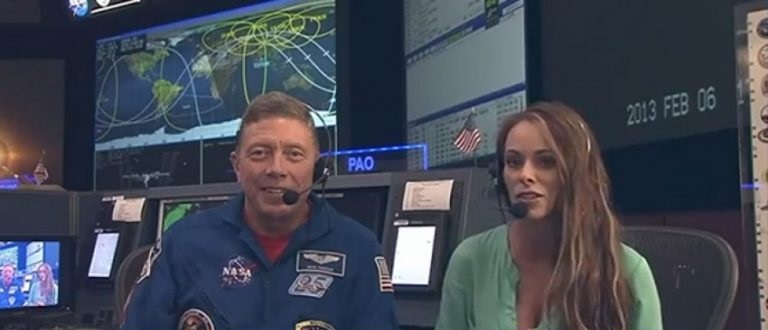Behind the Scenes: NASA Digital Learning Network
Did you know that NASA, home to astronauts, rovers, and space shuttles, also offers a comprehensive program of free Science, Technology, Engineering, and Mathematics (STEM) courses for students across the U.S.?
NASA’s Digital Learning Network (DLN) reached almost 76,000 students last year using video and web conferencing from one of their 10 studios. Caryn Smith Long , manager of DLN, explains how the innovative program helps to broaden students’ learning—and worlds.
IVCi: Who uses NASA’s DLN?
CSL: We work with students from kindergarten through certified teachers. We’re developing some asynchronous courses where we take some modules we offer classrooms and teach them to teachers so they’re able to do the same offerings with their students. Our calendars get really full really quick, so this gives them the opportunity to learn the material and do the module themselves in the classroom.
IVCi: What are the benefits of the program and video learning?
CSL: There are a variety of different benefits. I was a teacher for 16 years and I tried to give kids a chance to see beyond their own limited backyard so they could see a future for themselves. Video conferencing provides them with the technology that allows students to see beyond their own world.
When kids hear they’re going to be connecting with NASA, it automatically generates excitement just because of the branding. The meatball, the little blue insignia, is second (behind Coca-Cola) in terms of international recognition.
We’ve done some research on the effectiveness of video conferencing and have found that integrating inquiry presentation within video conferencing is indeed an effective way to have students learn. It’s actually a more effective way to learn the content when you’re being interactive and the students have supplies on their end and you’re facilitating that through a process of questioning.
IVCi: Are there any challenges with using video, especially regarding schools’ access to technology and equipment?
CSL: Initially, there were issues. Video conferencing equipment was very expensive. You could spend anywhere from $10,000 to $25,000 for a complete system and a lot of school systems didn’t have that money. Originally that was the only way we could connect with them because it was consistent in quality for both audio and video. But over the years, web conferencing has become more stable and reliable. We have web conferencing software that allows schools to connect via webcams on their computers directly to our video conferencing units. We’ve also used Skype software solutions. So opening up that door has made us more accessible to schools.
IVCi: Have you seen an audience growth due to this increased accessibility?
CSL: Yes, I think so. We have about a 20% growth and I anticipate even more growth at the end of this fiscal year.
IVCi: Which are the most popular programs?
CSL: Our Magnificent Sun seems to be really popular with our elementary students. Planet Hopping is another one, and States of Matter, and Roving on Mars with Curiosity. This one’s been revamped to include the ongoing research Curiosity is doing on the Red Planet.
IVCi: Are there any particular challenges with keeping students engaged when using video conferencing?
CSL: When you first start with these programs and the kids aren’t used to it, they’re all amazed the TV is talking back to them. But eventually the technology becomes transparent so it’s as if you’re in the classroom with them and they begin to realize we can see them. Sometimes I can see the entire classroom with video conferencing better than I can in the actual classroom because you have a different perspective. We try to personalize it as well. We ask for the kids’ names, and that forms a relationship.
IVCi: What are some of the most memorable questions you’ve heard from students?
CSL: The funniest questions they ask are astronaut related: How do you go to the bathroom in space, how do you sleep, how do you eat? When we open the session up at the end for questions, 9 times out of 10, we’ll get those three.
IVCi: Can you share some of your favorite moments?
CSL: Not only have I had the chance to work with astronauts, which is way cool, but I’ve also met the Tuskegee Airmen. We had author Chris Van Allsburg in our studios to talk about his book Zathura and about myths and realities of space travel. We had a chance to celebrate NASA’s 50th birthday. We had a big web cast where we did a NASA love-fest and connected all day long to each of the 10 NASA centers and each did a special presentation for U.S. schools, but we also did schools internationally that day.
IVCi: What’s your favorite part of NASA’s DLN program?
CSL: Knowing that we’re impacting more than just 30 students in a classroom. We’ve connected with hundreds of thousands during the year and we’ve inspired them to maybe look beyond their own situations and get excited about science and mathematics. To know that, as an educator, you have that kind of impact with that many students, that’s why you go into education.



